|
|
Important Dates: |
| |
| September 24, 2013 |
| Abstract Submission Opens Conference Registration Opens |
| |
| November 5, 2013 |
| Deadline for Workshop Requests |
| |
| December 9, 2013 |
| Abstract Submission Deadline |
| |
| December 22, 2013 |
| Larry Sandler Award Submission Deadline |
| |
| February 3, 2014 |
| Deadline for Early (Discounted) Conference Registration |
| |
| February 28, 2014 |
| Deadline for Hotel Reservations |
| |
|
|
2014 Meeting Organizers:
Daniela Drummond-Barbosa
Elissa Lei
Mihaela Serpe
Mark Van Doren
|
|
 |
|
Invited Keynote and Plenary Speakers
|
Keynote Speaker |
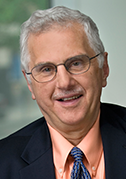 |
Bruce Alberts
Bruce Alberts, a prominent biochemist with a strong commitment to the
improvement of science education, recently completed a five-year term as
Editor-in-Chief of Science, and was one of President Obama’s first
three US Science Envoys. Alberts now holds the Chancellor’s Leadership Chair in
Biochemistry and Biophysics for Science and Education at the University of
California, San Francisco, to which he returned in 2005 after serving two
six-year terms as the president of the National Academy of Sciences (NAS) in
Washington, D.C. During his tenure at the NAS, Alberts was instrumental in
developing the landmark National Science Education standards that promote
‘”science as inquiry” teaching. Alberts is also noted as one of the original
authors of The Molecular Biology of the Cell, a pre-eminent textbook in
the field now in its fifth edition. Alberts has earned many honors and awards,
including 16 honorary degrees. He currently serves on the advisory boards of
more than 20 non-profit institutions, including the Gordon and Betty Moore
Foundation. |
| |
|
|
Plenary Speakers |
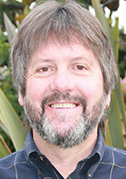 |
Rolf Bodmer
Rolf Bodmer is Professor at the Sandford-Burnham Medical Research Institute. His laboratory is interested in the molecular-genetic mechanisms of organ formation, homeostasis and aging. The Bodmer lab is pursuing this interest by studying the genetic functions and interactions that specify heart development and maintain heart performance in the
Drosophila model. The Bodmer lab has established the Drosophila heart as a model for many cardiac diseases, including congenital heart disease, cardiomyopathies as well as models of metabolic and hypoxia- and diet-induced cardiac dysfunction.
|
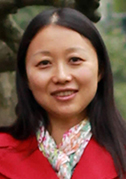 |
Xin Chen
Xin Chen is an assistant professor in the Department of Biology at Johns Hopkins University. Her laboratory uses the Drosophila male germline as a model system to study epigenetic regulation in an adult stem cell lineage. The laboratory uses a combination of genetics, genomics, molecular and cell biology tools to understand how epigenetic mechanisms regulate stem cell maintenance, proliferation and differentiation.
|
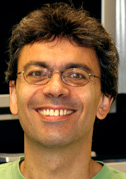 |
Aaron DiAntonio
Aaron DiAntonio is a professor in the Department of Developmental Biology at Washington University School of Medicine. His laboratory investigates molecular mechanisms that control the structure and function of neural circuits in development and disease. The laboratory combines genetic, molecular, neuroanatomical, and electrophysiological studies in both Drosophila and mouse to identify pathways required for the development, maintenance, and regeneration of axons and synapses.
|
 |
Toshie Kai
Toshie Kai obtained her university diploma (1993) and doctoral degree (1998)
at Osaka University in Japan. She spent her postdoc years in the laboratory of
Dr Allan Spradling (Carnegie Institution/ Howard Hughes Medical Institute). In
2005, she joined Temasek Life Sciences Laboratory as Principal Investigator and
established the Germ Line Biology Group.
|
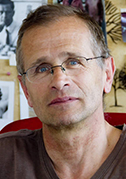 |
Francois Karch
François Karch is a Professor in the Department of Genetics and Evolution at the University of Geneva in Switzerland. Using the bithorax complex, his laboratory aims to elucidate how distant regulatory elements control their target promoters, to create precise temporal and spatial expression patterns during development. Their commitment of working in the native BX-C context is a trademark of the laboratory. The wealth of genetic information acquired for almost a century is unmatched in any other systems and reveals unexpected layers of complexity.
|
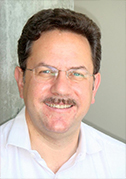 |
Arthur Lander
Dr. Lander directs the UCI Center for Complex Biological Systems, one of 15 NIH-supported National Centers for Systems Biology, which promotes interdisciplinary research and training at the interface between biology, mathematics, physics, computer science and engineering. His research deals with embryonic development, tissue regeneration and cancer biology. He has made contributions to understanding biological pattern formation, focusing on design principles underlying robustness (reliability in the face of real-world disturbances). Similar approaches have led him to identify fundamental design principles in cell and tissue growth that make it possible to produce tissues and organs of highly reproducible size. Exploring these strategies has led to new predictions about how and why cancers arise, and how best to treat them.
|
 |
Erica Larschan
Erica Larschan is a member of the Department of Molecular Biology, Cellular Biology and Biochemistry at Brown University. Her laboratory investigates the molecular mechanisms by which genes are identified for coordinate regulation, the key initial step in their transcription.
Drosophila dosage compensation is one of the best model systems for studying this process because all of the genes on a single chromosome are specifically identified and co-regulated. The laboratory integrates genomic, genetic and biochemical approaches to define how genes are regulated within highly compacted genomes.
|
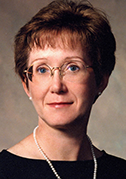 |
Trudy Mackay
Trudy Mackay is a professor in the Department of Biological Sciences at North
Carolina State University. Her laboratory focuses on understanding the genetic
and environmental factors affecting variation in quantitative traits, using Drosophila as a model system. Her laboratory seeks to identify the
genetic loci at which segregating and mutational variation occurs, allelic
effects and environmental sensitivities, and the causal molecular variants. Her
research utilizes mutagenesis to identify candidate genes and pathways,
quantitative trait locus mapping of alleles segregating in nature, and systems
genetics analyses to provide biological context and identify transcriptional and
genetic networks affecting complex traits. |
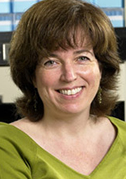 |
Helen McNeill
Helen McNeill is a professor in the Department of Molecular Genetics at the University Toronto, and a senior Investigator of the Samuel Lunenfeld Research Institute, Mount Sinai Hospital. Her laboratory investigates how growth and planar polarity tissue organization are coordinately regulated by the large cadherins Fat and Dachsous. The laboratory uses biochemical, molecular and genetic approaches in both Drosophila and mouse, to understand how these enormous cell adhesion molecules direct normal development and are disrupted in cystic kidney disease, neural tube closure defects and cancer.
|
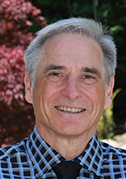 |
Patrick O’Farrell
Patrick O’Farrell is a professor in the Department of Biochemistry at UCSF San Francisco. His lab has investigated embryonic patterning, with a focus on the control of where and when cells divide. Recent projects explore timing control that orchestrates early cell cycles and the onset of the midblastula transition. In a new direction, the lab is exploring the biology and genetics of the mitochondria. New genetic and microscopic tools have made flies a powerful system for the analysis of the divergent biology of mitochondria.
|
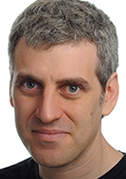 |
David Stern
David L. Stern is a Group Leader at Janelia Farm Research Campus, a part of the Howard Hughes Medical Institute. His lab studies the molecular causes of evolution between closely-related Drosophila species, including the following questions. How do transcriptional enhancers evolve to cause morphological divergence? What genetic and molecular changes caused evolution of courtship behavior?
|
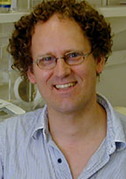 |
Benjamin White
Benjamin White is a Senior Investigator in the Laboratory of Molecular
Biology at the National Institute of Mental Health. His laboratory develops and
applies tools for identifying circuits underlying behavior in Drosophila, focusing principally on the circuit that mediates the
elementary decision to expand the wings after eclosion. By targeting
manipulations of neuronal activity and gene expression to small subsets of brain
cells, Dr. White's laboratory is interested in understanding how the networks
that govern innate behaviors function and develop.
|
|
|